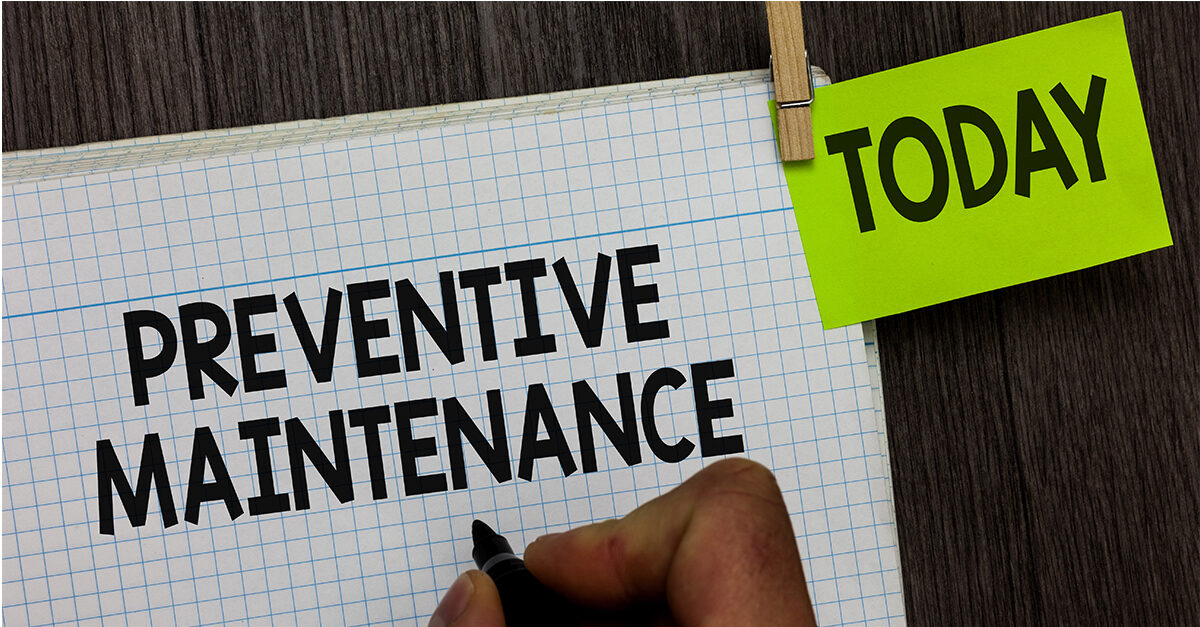Equipment maintenance is as important to a cleaning company as it is for any other business in the service industry. Companies risk suffering immense time, logistical, and financial losses due to poor asset maintenance.
It’s not always easy to estimate the type of maintenance your equipment will need at a given time, which is why having a good plan is critical. This article outlines five key steps to help you create a successful equipment maintenance plan for your cleaning business.
1. Know your equipment
Assess the full extent of the different types of equipment that comprise your cleaning business. The best way to achieve this is by compiling an all-inclusive equipment inventory.
Create an inventory based on categories:
- Manual equipment: brooms, dustpans, buckets, ladders, and dusters
- Electrical/mechanical equipment: vacuums, steam cleaners, wet and hot-water extractors, overhead scaffolding, or other “heavy” equipment
Differentiate equipment by age, state of repair, potential longevity, and importance to your cleaning operations. These factors will help focus your maintenance planning.
2. Risk-assess your maintenance
A comprehensive risk assessment process is a must for all equipment included in the maintenance plan. The assessment should include all equipment, tasks, or installations encountered at potentially hazardous client properties. You may even opt to incorporate proactive or novel cleaning methodologies as part of your risk profile, such as those for infection prevention and recontamination avoidance practices.
The risk assessment process must thoroughly identify and evaluate all tasks your cleaning company typically performs as well as their potential hazards and risks, such as slips, trips, sprains, or other injuries from cleaning wet floors, or potentially severe or even fatal falls from heights while cleaning windows, to name just two. Cleaning equipment without proper lockout/tagout (LOTO) procedures can also be fatal, as happened to a cleaner at a frozen-pizza manufacturer in Illinois in 2021.
3. Decide your maintenance options
Your risk profile and other important factors such as your maintenance budget and the size of your company should help you determine which equipment maintenance strategy to follow.
One option is a run-to-failure strategy, also known as corrective or breakdown maintenance. This is essentially a reactive approach to maintenance, whereby equipment is used until it literally breaks down before being repaired. This strategy is suitable for equipment that is inexpensive or has very low repair costs, or equipment that won’t cause serious repercussions for your business if it breaks down. Many types of manual equipment might fall into this category.
Another option is a preventive maintenance strategy, which, as its name suggests, is about trying to prevent equipment failure. This strategy involves scheduling regular maintenance on expensive equipment—such as heavier mechanical or electrical pieces—or on equipment that may cause significant interruption or losses to your business should it break down.
4. Check/correct/review your equipment maintenance plan
An equipment maintenance plan involves more than planning and implementation. You’ll also need to regularly test all aspects of the plan and take corrective actions. Regular inspections will help you evaluate if and how your maintenance program is working, and ensure you implement corrective actions where needed.
For example, a series of near misses for cleaners working at heights may suggest that maintenance on scaffolding or ladders is inadequate, and that you must put corrective measures in place to address the hazard.
Any nonconformance that results in an injury to a cleaner, damage to any asset or equipment, or even a near-miss, should automatically prompt you to review the prevailing maintenance plan. It should also trigger an immediate review of the risk assessment for the given equipment or task, which, in turn, could result in changes to the maintenance plan.
5. Embed continuous improvement
Don’t forget to embed continuous improvement firmly into your maintenance plan. Match the sophistication and extent of your continuous improvement to the size and scale of your business. A commitment to continuous improvement need not be daunting or overly complex.
Make sure your equipment maintenance plan has in-built “triggers” that automatically require improvement measures. These triggers could include:
- Constant equipment breakdowns or nonconformances
- An inability of your plan to incorporate technological advances, such as maintenance software
- A rising maintenance budget for no discernible reason
- Customer complaints or unsatisfactory customer service.
The backbone of any cleaning business is its equipment, whether it be manual, electrical, or mechanical. Having an equipment maintenance plan in place will ensure the needed structure, guidance, and reliability in caring for your company’s assets. The cost savings alone will make the efforts in creating a comprehensive plan more than worth it.




